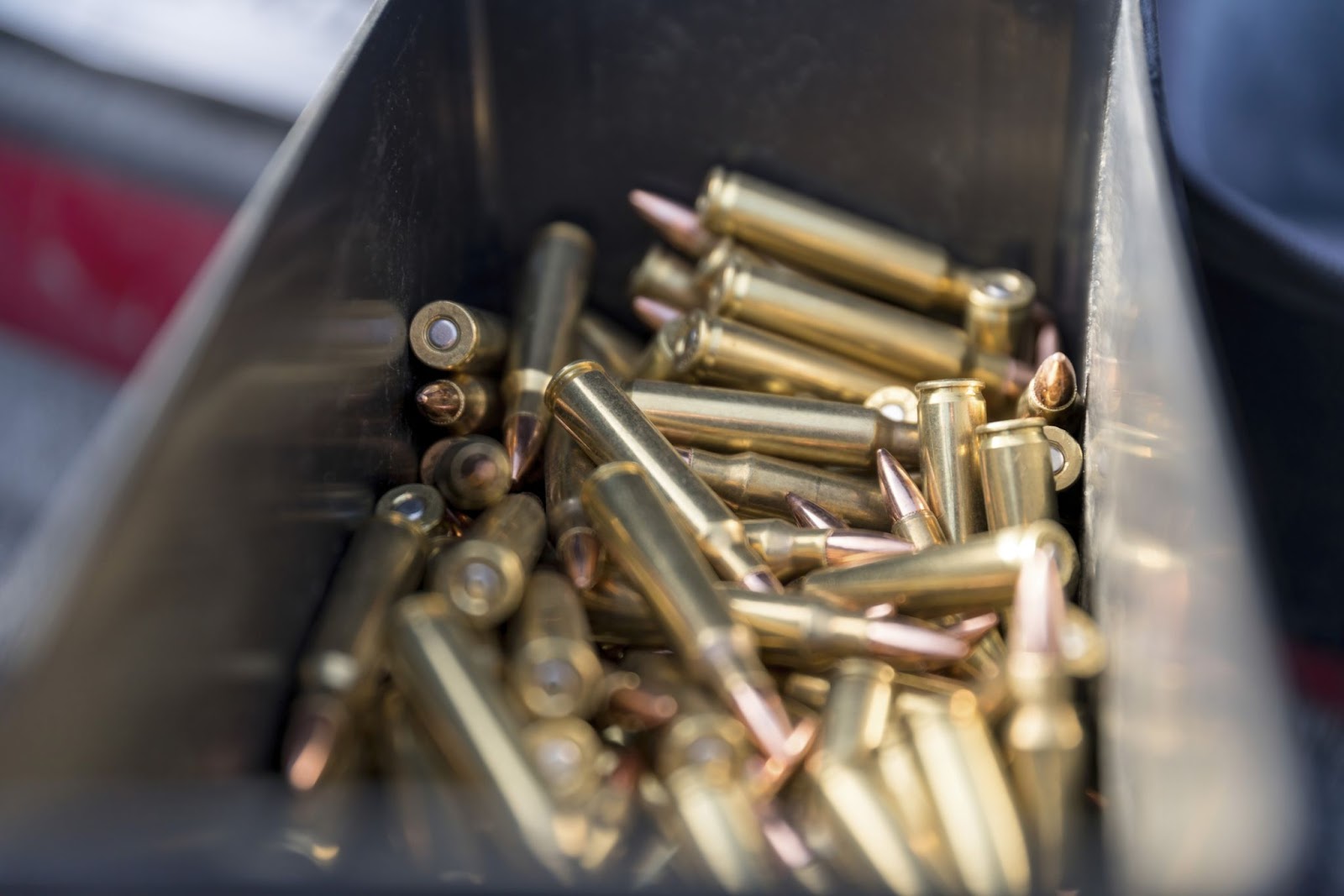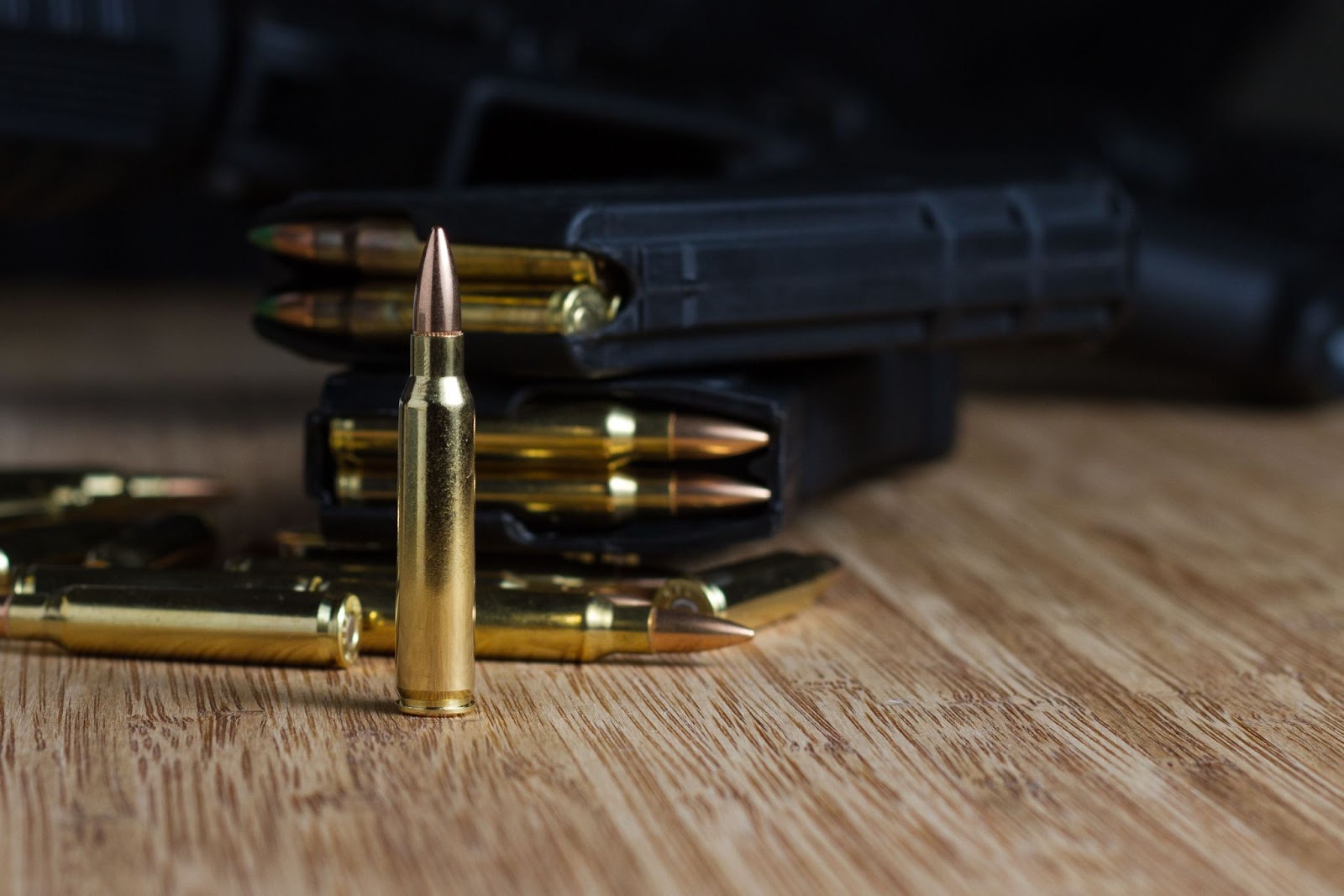
What’s the Best .223 Grain Ammo? (.223 Ammo Guide)
The best .223 grain ammo - that is, the best bullet for your intended application - is primarily determined by your application and the twist rate of your barrel. This short guide will help you choose the best ammo for your purposes, accounting for these factors.
Importantly, a wisely chosen bullet with respect to weight will shoot more accurately and provide adequate stopping power for the application. A bullet that’s too light may not hit hard enough or be accurate enough, whereas heavier bullets can also suffer issues associated with inaccuracy, and will experience faster drop.
With no further ado, let’s get into it.
Bullet Weight, Twist Rate, and Application
The first thing you will want to consider is your barrel twist rate, which is the number of inches the bullet must travel through the bore to complete one revolution around the axis that runs through its center. This is expressed in a ratio, such as 1:7 or 1:10. In the former case, a bullet will complete one axial revolution every 7 inches of linear distance traveled through the bore, and in the latter, one revolution per 10 linear inches. When selecting ammunition, it is important to match the cartridge to your specific firearm for both safety and optimal performance.
As a general rule, faster twist rates are better for heavier bullets, whereas slower twist rates are usually better for lighter bullets or with slower burning powders. Since we’re not working with black powder here, the general rule is: faster twist rate for heavier bullets, slower twist rate for lighter bullets. There is a wide variety of factory ammo loads available for different applications, including hunting, defense, and target shooting.
If the twist rate is too aggressive, the bullet will be spinning too rapidly when it leaves the bore, whereas if the twist rate is too slow, it will be under-stabilized. The effect, however, is the same, and accuracy will suffer. Achieving the best accuracy requires the right combination of bullet weight, twist rate, and cartridge.
The other thing you need to account for is the application. As a general rule, lighter bullets shoot flatter (holding all else equal), even though they usually suffer greater wind drift, whereas heavier bullets carry more ballistic energy to the target. Therefore, for target shooting and long-distance shooting, lighter bullets can be better (keyword is can, as this is not always the case), whereas for hunting and defensive applications, the nod goes to bullets on the heavier end of the spectrum.
Common .223 Ammo Weights in Grains
Now let’s take a closer look at some of the more common .223 bullet weights:
- Up to 45 grains. These are the lightest bullets commonly available in .223 ammo. They produce the lightest recoil and shoot the flattest, though they are affected most by wind drift. They can be highly effective for long-range shooting because of how little bullet drop they experience, though they can also be effective for varmint control since accuracy, more than stopping power, is necessary for such an application. Hornady makes a 35-grain varmint load, but 40-grain bullets are more common, and there are also 42 and 45-grain .223 rounds. Because they are so fast and light, they tend to perform best with slightly slower twist rates, greater than 1:10.\
- 50-55 grains. The majority of .223 ammo intended for target and training purposes will fall in this category. A common staple is 55-grain FMJ .233 ammo, and many manufacturers load .223 with bullets of this weight. Holding all else equal, a 55-grain .223 FMJ round will shoot fast, flat, and offer solid accuracy at close, intermediate, and in some cases even extended ranges, making it ideal for target shooting, drilling, and training. These bullets tend to perform well in barrels with 1:10 twist rates.
- 60-69 grain bullets. These tend to be heavier and slower than rounds loaded with 55-grain bullets. A common bullet weight for .223 ammo in this class is 62 grains, which is the standard for 5.56 NATO. They are also suitable for target shooting and predator control, but since they are heavier, they tend to perform better in barrels with more aggressive twist rates, such as 1:8 and 1:9, although they don’t perform poorly in 1:10 barrels, either.
- 70-80 grains. These are heavier .223 bullets and require a more aggressive twist rate, such as 1:8, 1:7, or even 1:6. They drop faster, although they are less affected by wind drift. The main advantage is that they carry more energy to the target and so are effective for hunting medium game, such as coyotes. They can also be effective for defensive applications when loaded with an appropriate bullet.
- Up to 90 grains. These are the heaviest .223 bullets of all. Both 80 and 90-grain .223 bullets require aggressive twist rates, as low as 1:6. These also produce the most muzzle energy and therefore can be suitable for defensive applications as well as for dispatching larger, tougher game.
Not Just Bullet Weight, Bullet Type
While bullet weight is important, you should also keep in mind general observations about the suitability of bullet type and ammunition. For instance, while FMJ and open-tip match ammo can be ideal for competition and long-range target shooting, they are not suitable for hunting and defensive applications because they tend to overpenetrate and may not penetrate appropriately for the intended application, failing to effectively dump their energy. For these applications, hollow point and ballistic tip ammo are much more effective.
When considering defensive applications, it is important to select .223 ammunition specifically designed for self-defense and home defense. These rounds are engineered to provide reliable stopping power and controlled penetration, making them suitable for protecting yourself and your family.
Here for .223 Ammo?
Ready to stock up on .223 ammo? Take a look through our catalog. We represent the top brands, offer a wide selection in terms of bullet type and weight, and even offer bulk .223 ammo deals. Check out our selection and let us know if you have any questions or are looking for something specific.

